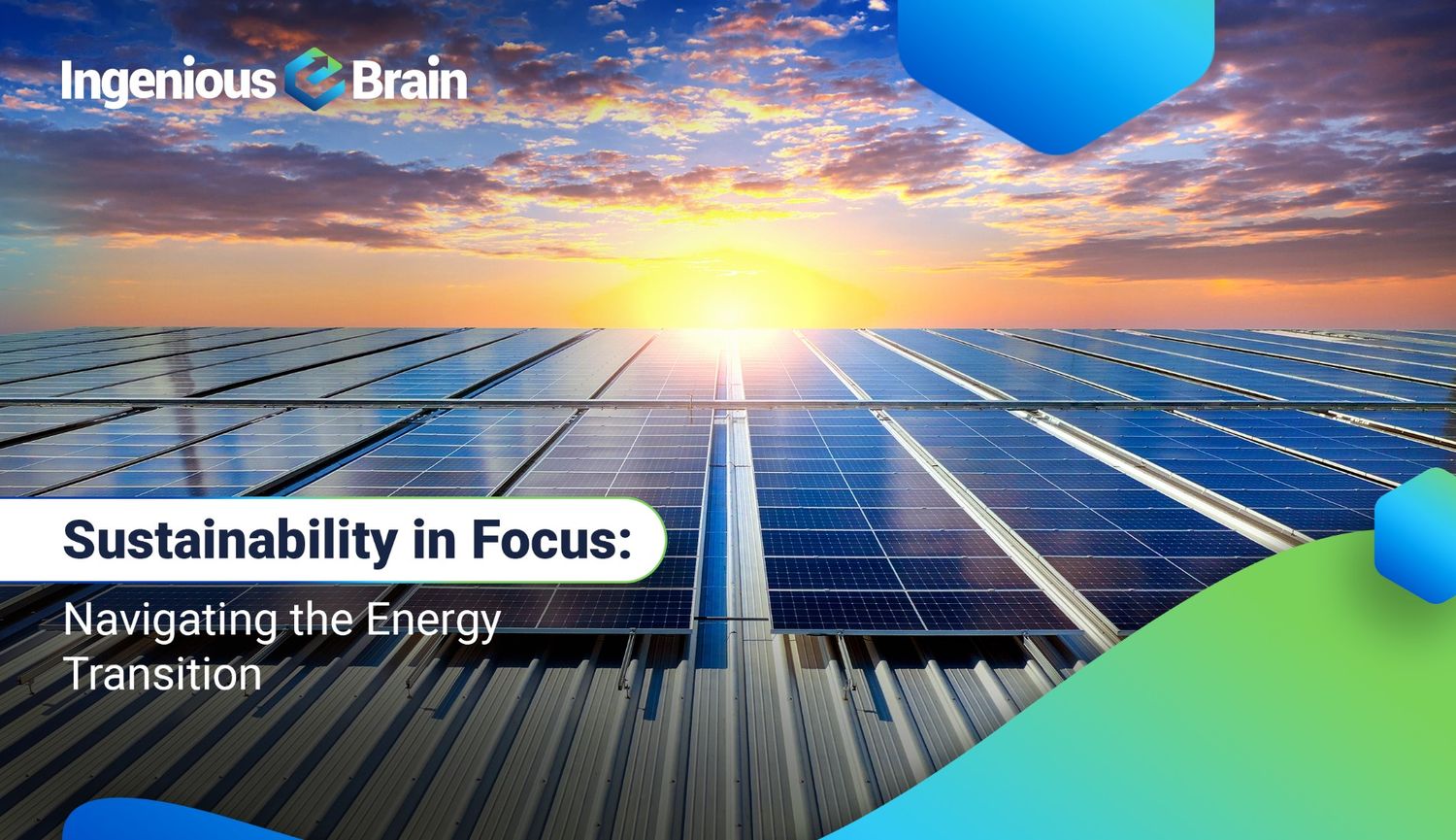Leading the Energy Transition with IeB Expertise to Achieve Sustainability
Why is energy transition crucial for carbon neutrality?
The energy transition represents a paradigm shift driven primarily by the global decarbonization journey and the sustainability goals of numerous governments. However, the energy transition extends beyond mere compliance with governmental mandates and guidelines. Corporations are capitalizing on it to unlock new revenue streams. The alarming rise in global warming and greenhouse gas (GHG) emissions presents significant challenges for all major industries, particularly the energy sector. Despite all the efforts, global carbon emissions continue to rise annually, particularly in energy-related categories, at a rate of 1-2%. For instance, in 2023, global energy-related CO2 emissions increased by 1.1%, amounting to 410 million tonnes (Mt). Nevertheless, the pace of this growth is tempered by the ongoing clean energy transition, demonstrating the potential of strategic investments in sustainable practices to mitigate the environmental impact and drive economic opportunities, providing a reassuring path forward.
Exhibit 1: Percentage share of global greenhouse gas (GHG) emissions (%)

From a broader perspective, investments in clean energy surged by 50% from 2019 to 2023, reaching a substantial $1.8 trillion in 2023. This upward trajectory is expected to continue as we strive to meet the ambitious target of 80% renewable energy contribution by 2030. The cumulative investment in clean energy is projected to be approximately $60 trillion from 2023 to 2050. In December 2023, the United Nations Climate Change Conference (COP28) culminated in a landmark agreement to phase out fossil fuels. This global accord calls for a significant escalation in efforts to triple renewable energy capacity and double energy efficiency improvements by 2030. Additionally, data from the International Renewable Energy Agency (IRENA) reveals that the cost of renewable technologies plummeted by 83% between 2010 and 2022, underscoring the economic viability of the clean energy transition.
Need for effective energy carriers in sustainable energy transitions
The clean energy landscape appears promising, though it entails a complex array of challenges. Despite the promising trajectory of the clean energy transition, balancing the intermittent and non-dispatchable nature of renewable energy remains a key issue. Additionally, managing vast amounts of energy necessitates significant investments in grid infrastructure, leading to a deeper investigation into energy storage and carriers. Energy carriers—which store, transfer, and release energy as needed—are vital to achieving sustainability across various sectors. While electrification is important, it is not a comprehensive solution for all industries. Sectors, such as shipping and aviation, require technologies that convert renewable energy into other forms.
Key energy carriers today include renewable hydrogen, batteries, smart grids, and carbon capture, utilization, and storage (CCUS). Renewable hydrogen is particularly notable in the Power-to-X field, a concept that involves converting renewable energy into electricity, molecules, and derivatives. This process is crucial for the energy transition as it allows for efficiently utilizing renewable energy. Batteries excel in efficiency, while the digitalization of grids into smart grids offers another effective energy carrier solution. This diverse approach highlights the crucial role of energy carriers in navigating the complexities of the clean energy transition.
Renewable hydrogen: an energy carrier
Renewable hydrogen is often perceived as an energy source but is a chemical energy carrier. It requires energy for its production and is used to store and transfer energy. Green renewable hydrogen is generated via electrolysis, a process that consumes energy and provides energy through fuel cells and other technologies. However, the conversion process results in substantial energy losses. Typically, only 20 to 30% of the original renewable energy is effectively utilized after conversion. Energy losses occur throughout the process, including approximately 25% during electrolysis, 10% during compression or up to 35% during liquefaction, 10 to 20% during transportation, and around 50% during fuel cell operation.
Exhibit 2: Energy efficiency flow of renewable Hydrogen
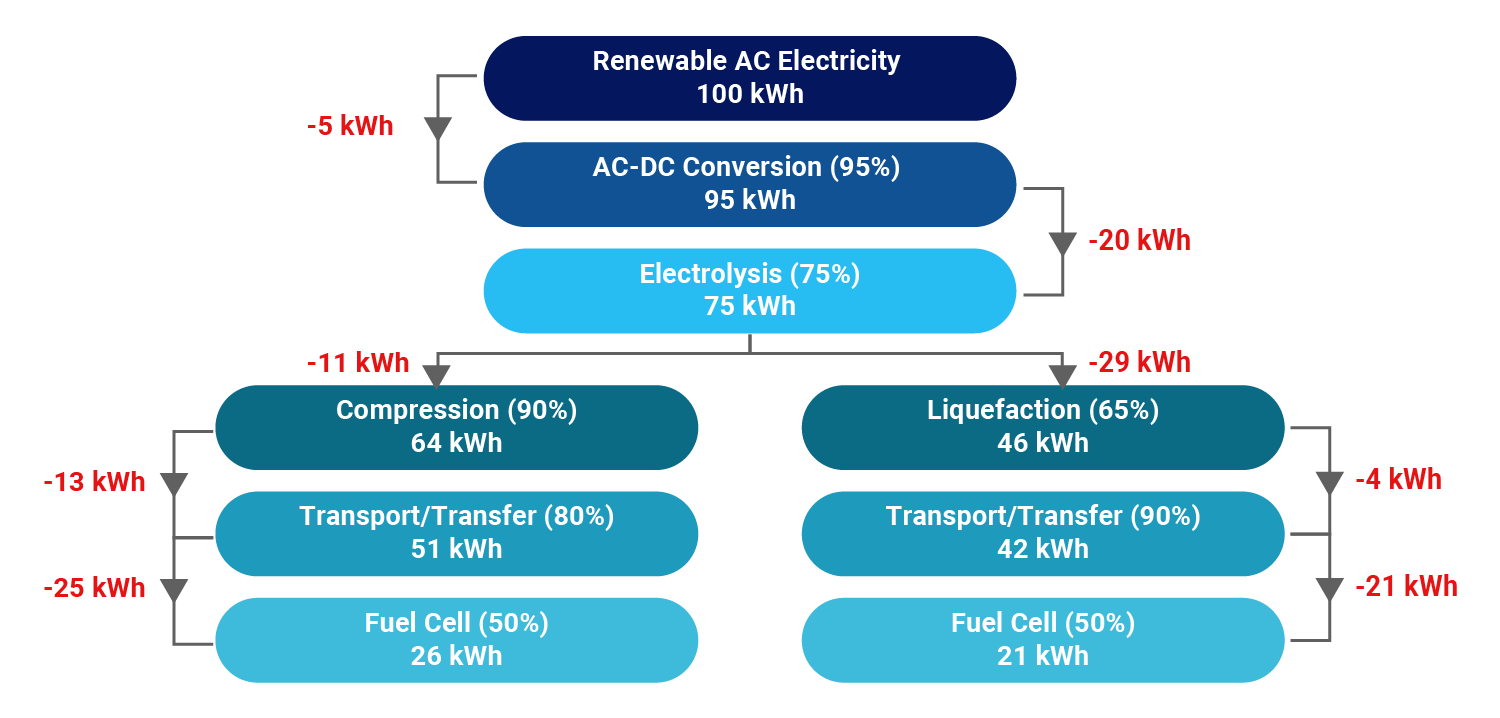
Green renewable hydrogen is utilized for various purposes and is an ideal solution where electrification is not the only option. One notable derivative is green ammonia, which shows significant potential for both power generation and fertilizer use. Additionally, e-fuels derived from renewable hydrogen present a sustainable fuel alternative for the shipping and aviation industries. Renewable hydrogen also offers long-term energy storage solutions with discharge times ranging from hours to quarters and a high energy density of approximately 40 kWh/kg. Notably, it is one of the few solutions capable of storing over 100 GWh of energy. Although currently positioned as a premium technology, substantial efforts are being made by governments, consortiums, and private entities to address the energy trilemma of reliability, affordability, and sustainability.
Countries like the USA, the Netherlands, the UK, Germany, China, and India heavily invest in renewable hydrogen projects to achieve economies of scale and technological advancements. Initiatives like Europe’s RePowerEU and the Inflation Reduction Act (IRA) in the United States provide significant incentives for private-sector investment and encourage the adoption of renewable hydrogen. Consequently, global renewable hydrogen production is projected to reach 500 Mt/year by 2050.
There are several compelling reasons to consider renewable hydrogen a promising technology:
● It facilitates a clean energy transition.
● It provides high energy mass density.
● It is highly convenient for energy transition and supply chain development.
Exhibit 3: End-use applications penetration of hydrogen
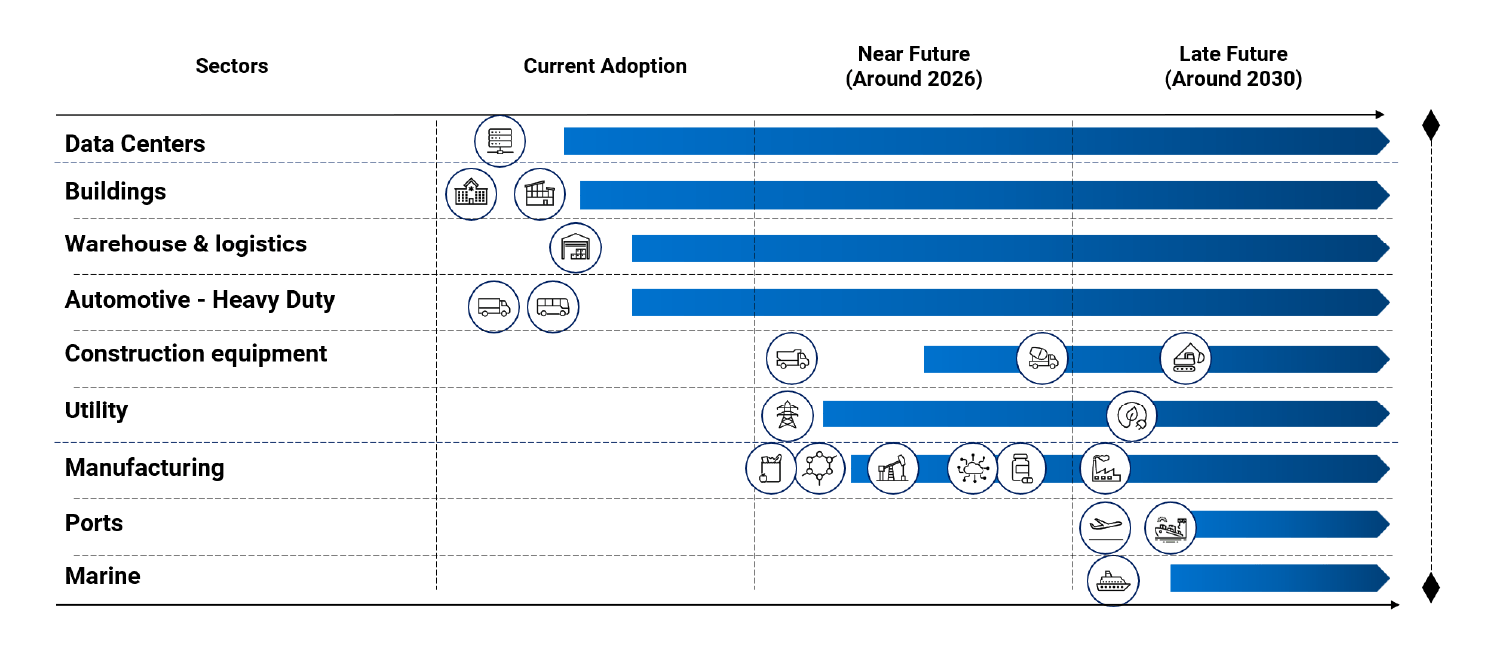
Battery energy vs. renewable hydrogen
Batteries are often recognized as reliable and cost-effective carriers for energy storage, offering stable operation. However, they fall short compared to renewable hydrogen in terms of discharge time (hours to days), storage capacity (approaching 100 MWh), and energy density (~0.3 kWh/kg).
Exhibit 4: Batteries vs hydrogen as energy carrier
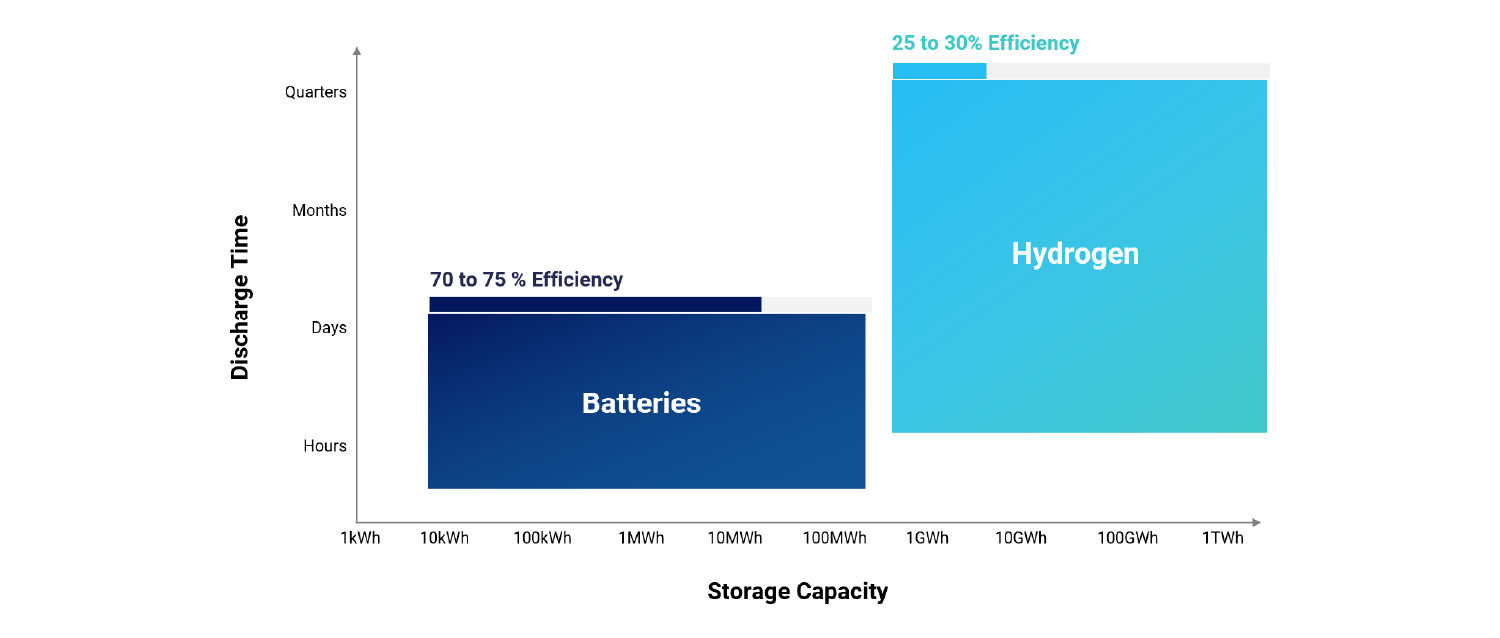
Where batteries excel is in energy efficiency. They only lose about 25 to 30% of the total renewable energy sourced, significantly better than renewable hydrogen. This efficiency makes batteries highly competitive in certain applications, such as passenger cars and the automotive sector in general. Many large conglomerates are investing heavily in well-established battery technologies, which are supported by advanced production facilities, expansion programs, and a robust supply chain. For instance, California-based Biliti Electric recently announced a $5.6 billion investment in India for battery manufacturing. Earlier this year, General Motors secured a long-term supplier contract with LG Chem to obtain 500,000 tons of battery materials from 2026 through 2035. These developments indicate the confidence of major players in battery technology.
Exhibit 5: Energy efficiency flow of battery

While each sector seeks sustainable energy solutions, performance cannot be compromised. Thus, the suitability of renewable hydrogen versus battery solutions varies by application. Batteries are ideal for passenger cars, whereas fuel cells are better suited for commercial vehicles, given their payload and driving range requirements. Batteries are also well-suited for managing small loads in solar and wind farms connected to the grid. Conversely, renewable hydrogen is advantageous in smart grids for large-scale, long-term storage. Peaker plants in the utility sector are now considering renewable hydrogen-based solutions over batteries. Heavy-duty applications, like construction equipment, also tend to favor renewable hydrogen.
Exhibit 6: Application suitability: Renewable hydrogen vs battery
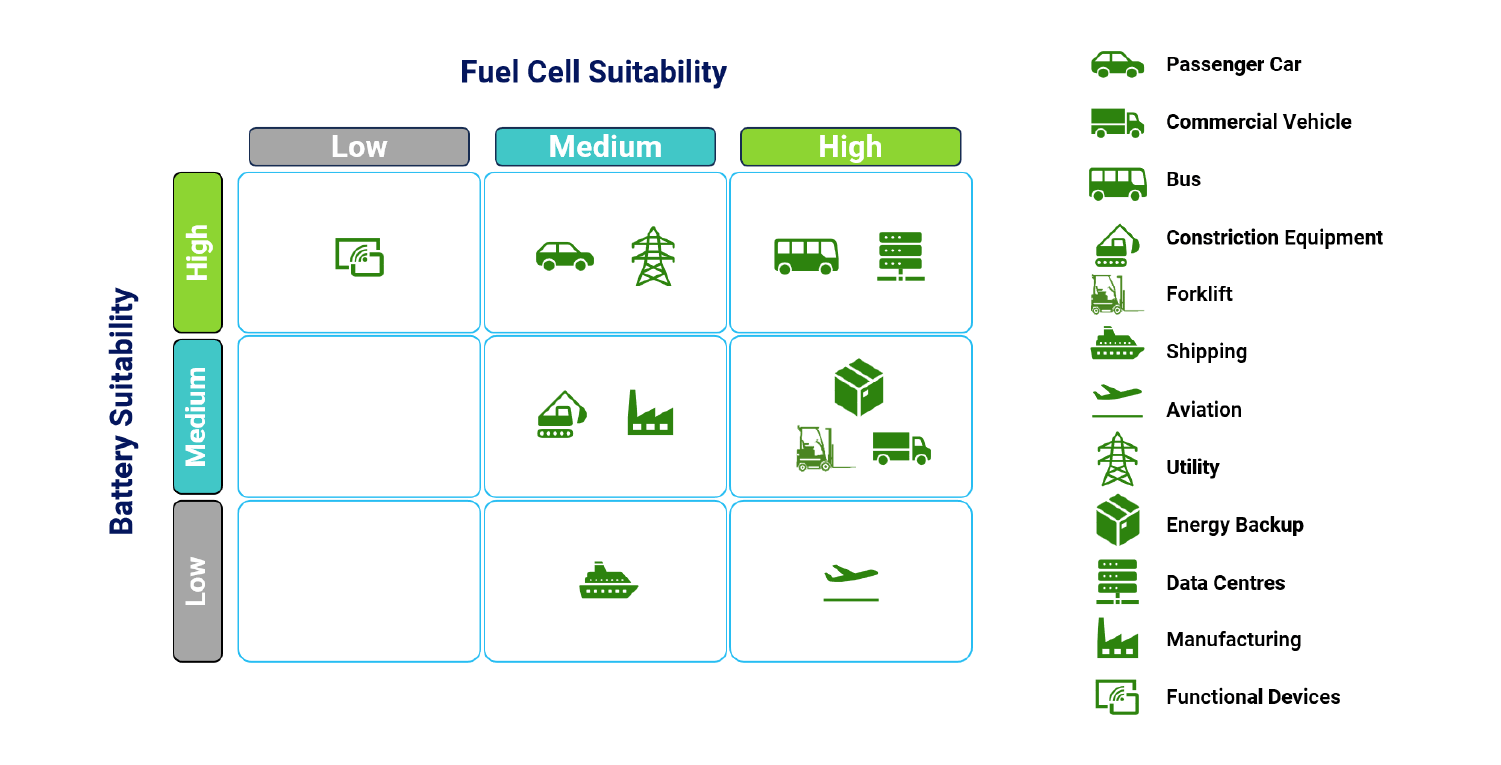
The demand for clean energy is soaring across all sectors, yet the market struggles to meet it. Currently, fossil fuel use for energy needs can only be reduced by around 60%, while the renewable share is about 5 to 6% for direct electricity. This gap presents an opportunity to develop energy solutions that enhance sustainability, efficiency, and performance. Consequently, significant investments and developments are occurring worldwide to boost the clean energy supply. Government policies and funding are accelerating this development. Investments in clean, renewable hydrogen and derivatives infrastructure are expected to reach around $80 billion annually by 2030, supporting a massive 500-fold increase in electrolyzer capacity. Additionally, investments in electrification targeting EV infrastructure and EV penetration will reach $140 billion annually by 2030. These investments suggest substantial business opportunities in both production and distribution, with new players entering the market and existing players expanding through organic and inorganic collaborations.
Smart grids: an energy-efficient key for sustainable transition
A smart grid is a modernized electricity supply system that continuously monitors, protects, and optimizes its network of interconnected components. Through advanced digital systems, it tracks real-time electricity supply and demand, improving efficiency with data-driven technologies like machine learning and artificial intelligence. Smart grids are essential for the energy transition, enabling increased renewable energy integration. The International Energy Agency projects an annual investment of $600 billion in electricity grids until 2030 to reach net zero.
Conclusion
There are multiple strategies to consider for sustainable energy transitions. Rather than competing, a collaborative approach involving smart grids, renewable hydrogen, and batteries is essential to address current energy challenges effectively. As global renewable energy production increases, optimizing our grids becomes crucial. In this context, batteries and renewable hydrogen offer excellent energy storage solutions. Batteries provide reliable short-term power bursts when needed by the renewable grid, while renewable hydrogen offers cost-effective long-term storage solutions. Additionally, renewable hydrogen is promising for managing excess electricity.
Renewable hydrogen-powered smart grids operate through three major stages: prevention, in-process correction, and post-recovery.
- Prevention: Collaborative planning for critical events enhances the resilience of renewable hydrogen-powered smart grids.
- In-Process Correction: Coordinated emergency strategies involving electricity and renewable hydrogen to ensure a reliable power supply. Renewable hydrogen is quickly delivered to essential nodes of fuel cell facilities, providing power support to end loads.
- Post-Recovery: Renewable hydrogen-powered fuel cells are crucial for rapidly recovering critical electricity loads, ensuring a stable and reliable power supply.
In summary, integrating smart grids, renewable hydrogen, and batteries offers a comprehensive and collaborative solution to the challenges of the energy transition.
Exhibit 7: Renewable hydrogen-powered smart grid resilience
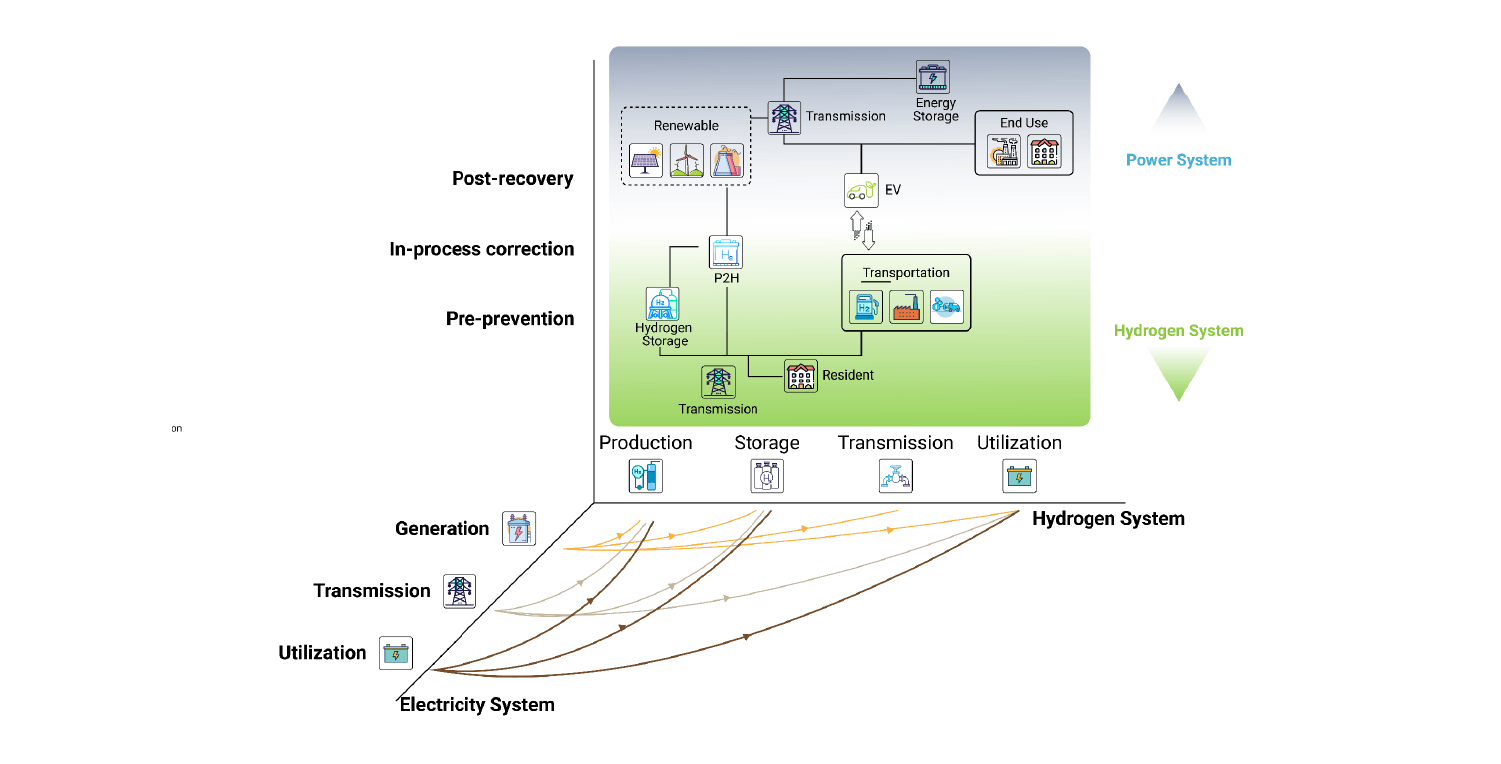
About Ingenious e-Brain
Ingenious e-Brain is one of India’s top five business and management consulting firms in the decarbonization and sustainability sector. We provide strategic expertise in deploying smart grid, renewable hydrogen, and battery technologies to create a resilient power system for managing energy in the short, medium, and long term as more renewables are integrated into local infrastructure.
As we look to the future, it is crucial to monitor technological advancements. Currently, efficiency, cost, and safety challenges persist with emerging technologies and their collaborative systems. With a strong track record in sustainable energy technologies and solutions, Ingenious e-Brain continues to lead by offering strategic support for developing and adopting cutting-edge technologies at competitive prices. This positions us to facilitate the global implementation of energy storage technologies.

